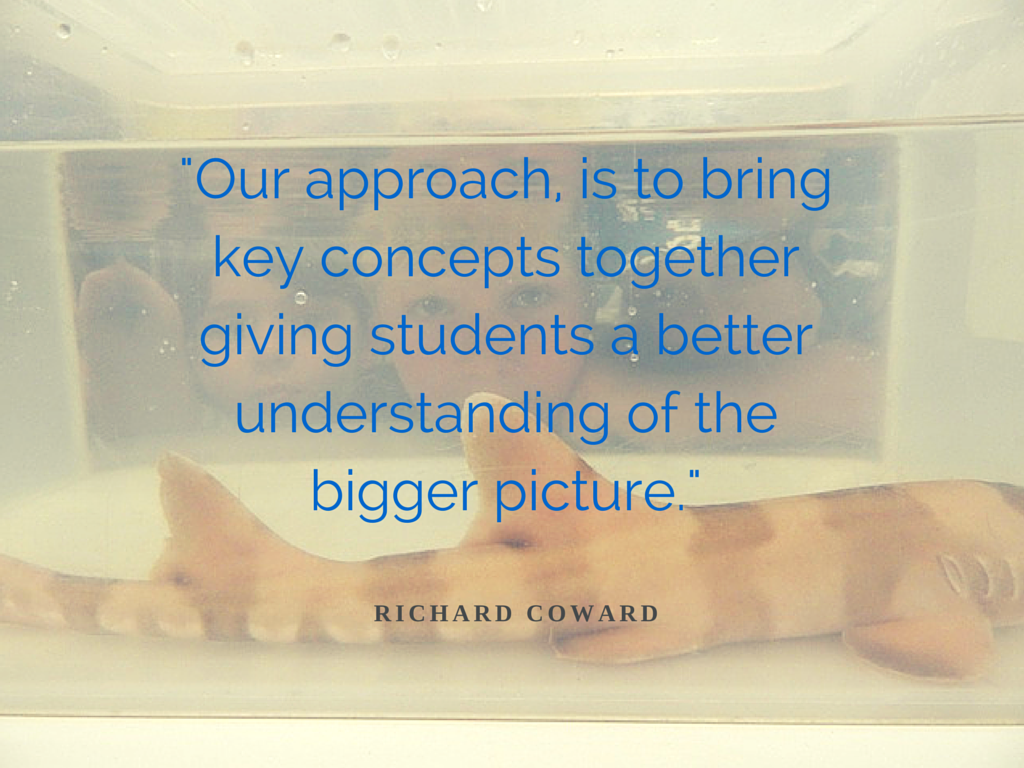By Richard Coward
Understanding our surrounding environment, our impact upon it and why we need to protect it has never been more important.
Fortunately, the Australian Curriculum is moving toward an improved coverage of key concepts and understanding within biological and Earth sciences across all primary year levels.
Ocean Life Education offers a fantastic opportunity for teachers to use our programs as a learning resource that is engaging, providing meaningful interactive learning whilst linking to related curriculum modules.
Our approach, is to bring key concepts together giving students a better understanding of the bigger picture.
We help students understand animals and their given habitat, how they differ from other animals, why they look and feel the way they do, what their importance is to the environment they live in, what problems humans create for them and why we need to look after them and their habitats.
For example, sea stars have a tough flat body to protect them from their harsh habitat (the shallow foreshore). They belong to a group of animals called ‘Echinoderms’ as they have tube feet and pump water around their body not blood to keep them alive. The sea stars eat algae and dead animals off the ocean floor, keeping it clean and healthy. If we pollute the water, sea stars will struggle to survive in their habitat. The problem lies in that if our human impacts result in dying sea stars, we lose an important cleaner of the ocean floor, resulting in a complexity of negative effects.
We take the approach of helping students to understand these cause and effect links to help keep our environment clean – to ensure the animals’ survival, and ours.
We deliver school programs that provide alignment with the Australian Curriculum Science strands: Science Understanding for Biological Science and Earth & Space Sciences, as well as Science as a Human Endeavour.
Using live marine animals, we provide a unique depth of engagement and understanding.
Our marine science incursions are a truly rewarding and refreshing way for students to learn key concepts set out by the national curriculum.
Visit our school programs page for a range of available programs.



